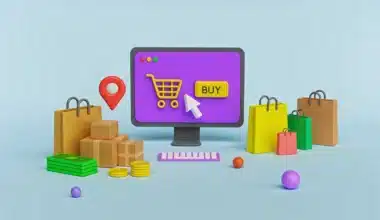As a small business owner, you should know about the QuickBooks Online platform and how it can help manage everything from taxes to payroll. With the QuickBooks Online Training Guide, you can also learn how to use QuickBooks Online to manage your personal finances as well as rental properties. Let’s see how you can get started.
How To Use QuickBooks Online For Your Small Business
#1. Learn how to use the QuickBooks Online dashboard.
The first step in learning how to use QuickBooks Online for business is to become acquainted with the dashboard.
When you log into your QuickBooks account online, this is the first thing you’ll see, and it’s from here that you can navigate to everything you’ll ever need as a QuickBooks user. Spend some time exploring the dashboard’s various menus and determining where you can find everything.
#2. Include information about your company.
Set up your company information and preferences after your first QuickBooks login. Click the gear icon on your dashboard, then select “account and settings,” then the “company” tab. You can enter information about your company here, such as:
- Name of the company
- Type of business
- Getting in Touch
- Address
- The company’s logo
#3. Select your financial preferences.
While updating your company information, you can also change your financial preferences in this section of your QuickBooks Online account by using the sales, expenses, and advanced tabs. Update your credit card payments, invoice automation, VAT details, and your company’s year-end date so that all of the information in your reports is correct.
#4. Import your company’s data
It’s quick and simple to import your business data into your QuickBooks Online app, saving you from having to start from scratch. You can import data such as bank transactions, charts of accounts, supplier bills, employees, budgets, and customer or vendor information.
QuickBooks Online provides several options for importing business data, allowing you to select the one that works best for you and your company. Among the various methods available are:
- MS Excel spreadsheets
- CSV documents
- QuickBook’s proprietary text file format is Intuit Interchange Format (IIF).
- File for Web Connect
#5. Personalize your Chart of Accounts
The list of different categories used in QuickBooks to categorize money for your company’s financial statements is known as your chart of accounts. QuickBooks Online has five default categories: income, expenses, assets, liabilities, and equity. Many people who use QuickBooks for business will leave the default settings alone, but you may want to tweak the categories to meet your specific requirements. You might want to rename the categories, or perhaps you’ll find that you need to set up an additional category that doesn’t fall under the five already listed.
Simply navigate to “Accounting” in the dashboard and then click on “Chart of Accounts.’ Choose “New,” then “Expense” or “Other Expense” as the “Account Type.” Select a “detail type,” then enter the name and description of your new expense category.
#6. Link your bank and credit cards.
At this point, you can sync your QuickBooks Online account with your bank accounts and credit cards. This means that QuickBooks will automatically download and categorize previous transactions from your accounts, saving you time and effort by eliminating the need to manually enter any details.
Go to your dashboard’s ‘Bank Accounts’ section and click ‘Connect account,’ then search for your bank and sign in with the same username and password you use for online banking. Once connected, you’ll be able to see all of the accounts you have with this bank, so choose your business account and then the transactions you want to transfer to your QuickBooks account. Most banks will only show transactions from the last 90 days, but some will go back as far as 24 months.
QuickBooks will automatically download the relevant transactions once you’ve selected them. After your transactions have been downloaded, you will only need to approve how they have been classified.
#7. Increase the number of users.
You can add additional users to QuickBooks for a small business, ranging from your sales manager to your bookkeeper.
You can change the settings for each user to allow them to do specific tasks, but your subscription level will determine how many users you’re allowed to have, so if you’re seeing a user limit, you should consider upgrading to the next level.
To invite a new user, go to your dashboard’s “Settings” and then “Manage users.” Select “Add user” and the user type you want to create.
#8. Create a payroll system.
Go to “Payroll Settings,” then “Setup Overview.” You can enter important information for your QuickBooks payroll here, such as:
- Pay policies cover everything from payment schedules to vacation policies.
- Tax setup is required to ensure that tax payments are processed correctly.
- Deductions: Add any standard deductions for all employees, such as health insurance or retirement plans, here.
- Preferences: This includes accounting and cheque printing.
After you’ve entered this information, go to the setup overview screen and select ‘Accounting,’ then “Company and Account.” Select the account that will be used to track payroll expenses.
To add employees to your payroll, go to your dashboard and select “Employees.” You can enter your employees’ information here. It’s worth noting that all employees will have the standard pay policies and deductions you’ve already established, but you can choose to add them when you add employees instead. You’ll be guided through the process of entering their tax information, salary details, and other information such as their pay schedule, as shown in the video below.
#9. Connect your applications
QuickBooks Online allows you to access your accounts from any location and at any time. However, it also integrates with thousands of compatible apps available in the QuickBooks App Store, all of which are guaranteed to make your life easier, with 86% of QuickBooks customers agreeing that apps save them time. From expense management to cash flow forecasting, there are a variety of apps available to help you streamline your processes and stay on top of your business finances.
You can browse the app store’s various categories, or if you know what you’re looking for, simply search for the app’s name. The Float app is QuickBooks’ most popular operational cash flow forecasting add-on, so if you want to know what your future bank balance will be, join the thousands of users who are already saving hours every week by using Float.
#10. Regularly reconcile
QuickBooks Online will save you time and effort, but it will only work properly if you keep it up to date. You should reconcile your accounts on a regular basis (QuickBooks recommends once a month) so that your accounts match what’s on your bank and credit card statements. Regular reconciliation ensures that your cash flow forecast is always accurate because Float pulls real-time information from QuickBooks Online.
Spending a few minutes each day, week, or month reconciling your accounts will save you headaches later. Here’s how to go about it:
- Click the gear icon on the home screen, then ‘Reconcile.’
- Select the bank account to be reconciled.
- Enter your statement’s ending balance and date.
- Click ‘Start Reconciling’ to bring up the transactions for the specified time period.
- Compare the transactions in QuickBooks to the ones on your bank statement.
- Tick the appropriate transactions in QuickBooks.
- The difference amount should be zero—this means that the transactions match.
- If there is a difference, ensure that the number of transactions for both sources is the same. If any transactions are missing in QuickBooks, you can manually enter them.
- If the problem is with the date of transactions, simply click on it and change it to the correct one from your bank statement.
- If neither of these fixes the problem, double-check the amount of each transaction in QuickBooks.
- Click the ‘Finish Now’ button.
QuickBooks Online Training
Having seen how you can use QuickBooks Online for your small business, here are some resources to get you started on QuickBooks Online training:
- Getting Started in QuickBooks Pro
- QuickBooks Pro 2020 Essential Training
- QuickBooks Advanced Bookkeeping Techniques
- Learn QuickBooks Online from Hector Garcia, CPA
- QuickBooks Online Up and Running.
- 39 Free QuickBooks Tutorials: Learn QuickBooks Fast
- Free QuickBooks Online Training
- QuickBooks Training
- QuickBooks Learning Center
- QuickBooks For Dummies
Is QuickBooks Online Training Free?
QuickBooks Online Certification training and exams are available in QuickBooks Online Accountant for free to accounting professionals.
Is QuickBooks Online Easy To Learn?
Learning to use QuickBooks is simple for those who are familiar with accounting concepts and how accounting software works, but it can be difficult for those who are technologically challenged or have no bookkeeping knowledge.
How To Use QuickBooks Online For Personal Finances
In one place, you can easily keep track of your expenses, income, and budget. Not only that, but Quickbooks Online for Personal Finances also allows you to pay your bills on time, estimate taxes, and automatically update your finances. With the mobile app, you can run payroll while on the go, receive automated email reminders, download your bank transactions into QuickBooks, and more.
Let’s go over the key features of QuickBooks Online for Personal Finances listed below:
#1. Keeping Track of Expenses
By connecting your bank accounts and credit cards to Quickbooks, you can easily keep track of your expenses. You can further categorize your expenses and eventually generate financial reports to better understand your spending.
#2. Tax Calculation
As previously stated, Quickbooks automatically categorizes and organizes expenses, allowing you to easily track expenses throughout the year. As a result, you don’t have to be concerned about tax filing and tax deductions.
#3. Receipt Scanning
You can upload receipts to the Quickbooks mobile app and match the information on the receipt with an existing transaction.
#4. Cash Flow Management
Cash flow management is one of the most important aspects of using QuickBooks Online to manage personal finances. By entering your financial data into QuickBooks on a regular basis, you can gain a better understanding of and control over your cash flow. You can enter past transaction information as well as anticipated future transactions such as systematic investment plans (SIPs), lease payments, and more, allowing QuickBooks to easily forecast your spending in future months.
#5. Payment by Internet
QuickBooks allows you to accept all types of payments, including bank transfers, credit/debit cards, and so on, resulting in faster payments. QuickBooks retrieves your transactions automatically, saving you time and money.
#6. Bills Automation
QuickBooks Personal allows you to manage and pay your bills in one place. You can set up automatic payments for your bills to ensure that you never miss a payment. If not, you can opt for automated bill payment reminders. Using the “Memorized Transactions” feature, you can save your payment credentials for faster checkout. You can also pay multiple vendors at once and specify a payment method for each of them. Furthermore, because receipts and invoices are automatically saved in the cloud, they cannot be overlooked.
How To Use QuickBooks Online For Rental Properties
Spreadsheets, software designed specifically for real estate, and general-purpose accounting software such as QuickBooks Online are all options for keeping track of rental properties.
Many investors are confused about how to set up rental properties in QuickBooks Online because the software is well-known. We’ll show you a step-by-step process of setting up rental properties in QuickBooks, as well as discuss a free alternative to QuickBooks Online.
How Do You Set Up Rental Properties In QuickBooks Online?
Because QuickBooks Online is general accounting software designed for all types of businesses, there are several hoops a landlord must jump through in order to use it for a rental property business.
Here are some steps for setting up rental properties in QuickBooks Online:
- Make a Company and name it something like Music City LLC or Orange Drive Rental.
- Create a Chart of Accounts
- Add the rental property to the Chart of Accounts as a Fixed Asset so that depreciation can be manually deducted at the end of each year and the property’s fair market value can be updated.
- Include checking, savings, credit card, and mortgage accounts for each business bank account used for the property.
- Configure the property as a Class, usually with the exact address, such as 1411 Orange Drive.
- Create a Customer for the tenant, generally using the name(s) on the lease, to ensure rental income and security deposits are correctly credited.
- Create a Product for rental income, then create Sub-Products for the various types of rental revenue collected, such as monthly rent, late fees, and pet fees.
- If you want to send a bill to a tenant each month rather than using a free online rent payment service set up recurring invoices for Rent Payments.
Adding multiple rental properties to QBO
The process for setting up multiple rental properties in QuickBooks Online is similar to the one described above, with a few additional steps.
Assume an investor owns a single-family rental (SFR) home and a two-unit multifamily duplex. One approach to using QBO for multiple rental properties is to create one company with multiple classes, while the other is to create two separate companies.
Is QuickBooks Online The Best Option For Managing Rental Properties?
QuickBooks Online can be used to manage rental properties. However, an investor should plan on spending time or paying a professional to set up the software.
How Can I Learn QuickBooks By Myself?
You can take video tutorials, participate in webinars, or find QuickBooks tutorials online.
How Long Does It Take To Learn QuickBooks Online?
It takes about 2–3 weeks to learn QuickBooks online.
How do I add and manage customers in QuickBooks Online?
To add a new customer, go to the “Customers” menu and click on “New Customer.” Enter the customer’s information and save. To manage existing customers, go to the “Customers” menu and select “Customers” to see a list of all your customers. You can edit or delete customers from this list.
How do I create and send invoices in QuickBooks Online?
To create a new invoice, go to the “Sales” menu and click on “New Invoice.” Enter the customer’s information, add line items for the products or services being billed, and save. To send the invoice, click on “Send” and select the email address to send it to.
How do I track expenses in QuickBooks Online?
To track expenses, go to the “Expenses” menu and click on “New Expense.” Enter the vendor’s information, add line items for the products or services being purchased, and save. You can also connect your bank account to QuickBooks Online to automatically import and categorize expenses.
How do I run financial reports in QuickBooks Online?
To run financial reports, go to the “Reports” menu and select the report you want to run. You can customize the date range and other options for the report before running it. You can also save report settings for future use.
In Conclusion,
QuickBooks is the most widely used accounting software for small businesses. It is available in a variety of editions, both online and on your desktop computer. With the steps outlined in this article, you can use QuickBooks Online to manage your personal finances as well as your small business and rental properties. We have also listed some QuickBooks Online training resources available for you.
Frequently Asked Questions
Is there a manual for QuickBooks?
QuickBooks Online has a training manual that serves as a resource for all SWCDs using QuickBooks.
How do I reconcile in QuickBooks?
Choose Settings, then Reconcile. If this is your first time reconciling, click “Get started” to proceed. Select the account to reconcile from the Account selection. Check that it matches the one on your statement.
What does C mean in QuickBooks Online?
In QuickBooks Online, C means Cleared,
{
“@context”: “https://schema.org”,
“@type”: “FAQPage”,
“mainEntity”: [
{
“@type”: “Question”,
“name”: “Is there a manual for QuickBooks?”,
“acceptedAnswer”: {
“@type”: “Answer”,
“text”: “
QuickBooks online has a training manual that serves as a resource for all SWCDs using QuickBooks.
“
}
}
, {
“@type”: “Question”,
“name”: “How do I reconcile in QuickBooks?”,
“acceptedAnswer”: {
“@type”: “Answer”,
“text”: “
Choose Settings, then Reconcile. If this is your first time reconciling, click Get started to proceed. Select the account to reconcile from the Account selection. Check that it matches the one on your statement.
“
}
}
, {
“@type”: “Question”,
“name”: “What does C mean in QuickBooks Online?”,
“acceptedAnswer”: {
“@type”: “Answer”,
“text”: “
In QuickBooks Online, C means Cleared,
“
}
}
]
}
Related Articles
- QuickBooks Accountant: Basic Guide for Optimal Results (+ Quick Tools)
- Top Best 10+ BOOKKEEPING SYSTEMS FOR SMALL BUSINESS for 2023
- XERO VS QUICKBOOKS: Best 2023 Review Guide & All You Need (+free tips)
- BOOKKEEPING SERVICES FOR SMALL BUSINESS: Top Best for Small Business in 2023
- 17 Best SMALL BUSINESS PAYROLL SYSTEMS 2023, Updated!!!
- TAX WRITE OFFS: What is it, How it Works & Application






